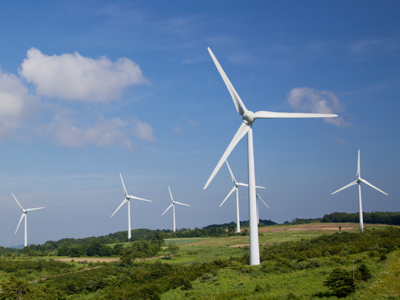This Physics quiz is called 'Electricity - Generating Electricity' and it has been written by teachers to help you if you are studying the subject at senior high school. Playing educational quizzes is one of the most efficienct ways to learn if you are in the 11th or 12th grade - aged 16 to 18.
It costs only $12.50 per month to play this quiz and over 3,500 others that help you with your school work. You can subscribe on the page at Join Us
Generating electricity can be done by burning fuels, using nuclear reactors or capturing energy from the environment. When fuels are burnt, they release greenhouse gasses and other gasses that cause acid rain. Some of the fuels we use, for example wood and biodiesel, are sustainable whilst others, called non-renewable fuels, will be used up at some point in the future (although for coal, oil and gas we could wait for tens of millions of years for them to re-form!).
The burning of fossil fuels is thought by many scientists to contribute to the problem of global warming. The reason that they think this is happening is because fossil fuels contain carbon that was locked out of the carbon cycle millions of years ago. When they are burnt, this carbon (in the form of carbon dioxide) adds to the carbon in the present day carbon cycle. Normally, the amount of carbon dioxide in the air is kept fairly constant by photosynthesis, but at the present time, it appears that photosynthesis can't keep up with this extra quantity and carbon dioxide levels are rising.
When fuels are used to generate electricity, the process is essentially the same for them all, including nuclear fuel. Heat is released from the fuel and is used to boil water. This water is turned into steam. The steam is passed through turbines which then rotate at high speed. The rotation of the turbines is then used to turn the generators to produce the electricity.
Renewable energy is a term that is applied to methods of generating electricity that will always be available, like wind and water power. Solar power is usually associated with generating electricity from the Sun's light (like solar powered garden lights, solar powered calculators etc) but you can actually track most renewable energy back to the Sun - geothermal energy is an obvious exception. Wind power, wave power and most hydroelectric power all depend on the weather which is caused by the Sun heating different parts of the Earth's surface by different amounts. Biomass and other biofuels like wood come from food chains which require the Sun's light for photosynthesis.
Generating electricity from renewable sources has both advantages and disadvantages, for example solar cells produce free electricity and without pollution once they are installed but they are expensive and produce no electricity at night. Similar disadvantages can be applied to the other forms of renewable energy - they don't generate electricity all the time, the amount they generate varies and they tend to be expensive to set up. On the other hand, they have similar advantages, the electricity they produce is free once they are set up and it will always be available. One of the biggest advantages is that when they are generating electricity, they are not a source of gasses that cause either acid rain or contribute to the greenhouse effect that causes global warming.








